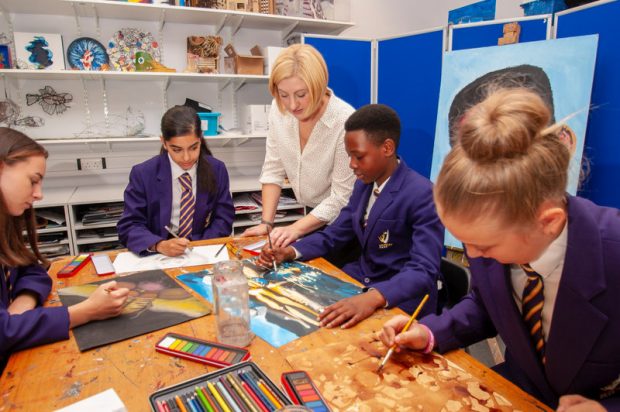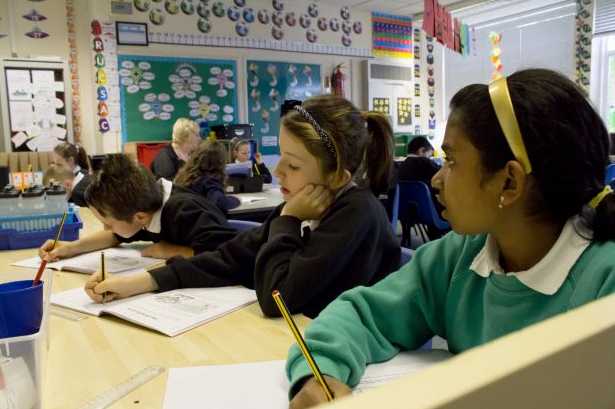Spring term monitoring inspections – moving forward, despite the challenges

Chris Jones (@Chris_Ofsted), Director, Corporate Strategy, @Ofstednews, discusses the findings from the spring term monitoring visits:
Schools have had a tough year – to say the least. And, while having children back together under one roof has made the job of educating more straightforward, schools are still facing considerable challenges as they bring pupils back up to speed.
Last term, our inspectors carried out monitoring inspections to schools currently graded inadequate or requires improvement. We carried out most of these visits remotely, though on a few occasions we did go into schools. We held discussions with leaders and staff, as well as with pupils and governors, to find out about how things had been going.
At the end of these inspections, we made just one judgement – whether leaders and those responsible for governance are taking effective action to provide education in the current circumstances. What we found was largely very encouraging.
Moving forward, despite the challenges
Despite the challenges of the COVID-19 (coronavirus) pandemic, many school leaders have still managed to move things on in their schools.
Based on previous inspections, aspects of the curriculum were often an area for improvement in these schools. So, it was good to see so many leaders giving careful thought to improving their curriculum. While the pandemic has understandably slowed things down, development was still taking place, including training for staff.
There was usually more work to be done though. This was often in foundation subjects, where curriculum thinking and planning tended to lag behind maths and English. And now, of course, schools are dealing with the challenges of children having had very different experiences to each other during the three national lockdowns. This has some serious implications for planning and delivering the curriculum.
Reading, reading, reading
In all of our spring term inspections, we looked at how well schools were developing their teaching of reading, including through remote education. The primary schools we inspected had rightly prioritised developing the teaching of reading, even if some had not achieved what they needed to yet. They had trained staff, thought about the best resources to use and had often bought new reading schemes and books.
In most primary schools, phonics teaching had continued, both on site and remotely during lockdown. Schools were often finding it tricky to teach phonics remotely though, particularly for the weakest readers. Many primary schools were giving pupils access to online books and libraries, and some to physical books, to keep reading going while they were at home. One school had created a library in a bike shed, for example, so that children could exchange their books at agreed times without having to go into the building.
However, we also found that some parents needed more guidance than schools provided to help their children with reading at home. Older primary pupils who could not read well were not always given the support they needed to keep improving either.
There was a mixed picture in secondary schools. Some schools had included whole class reading as part of their ‘form time’ in remote education sessions, or set expectations that pupils should read daily. Some had provided online books. But for pupils who struggled to read, there tended to be little, if any, reading work going on unless they were actually attending school. Reading was an area that inspectors sometimes asked secondary schools to work on further.

Keeping motivated
Our inspections show that in the third national lockdown, there has been wide variation in the numbers of vulnerable children and those with special educational needs and disabilities (SEND) attending school.
Some schools had almost all of these pupils in, whereas others had very small numbers. We heard from leaders who were going out of their way to encourage children to come into school, so that they could provide them with the support that they needed. We also heard that parents were sometimes too worried to send their children in.
We also know that some vulnerable pupils and those with SEND have not been getting on well with remote education at home – although this is true of other children too.
Keeping motivated has been a struggle for almost every child. Schools told us that even children who had been motivated at first, had ‘switched off’ completely by the end of the third lockdown.
Getting online
While keeping children motivated has been a huge challenge for schools, access to remote education is also an important factor in determining how much they have learned or missed over the last term, much of which was spent in lockdown.
We know from our own research, and others’, that not all children have access to computers at home. Some children take part in live lessons by using their phones or a parent’s phone. Some have no access at all.
Remote education does not have to be delivered online. However, the reality is that it often is. As a result, children not being able to take part in, for example, live lessons has been a problem for some families – although there have been efforts to address this.
We know that many children with SEND have struggled with remote education too, as have some who speak English as an additional language. The Office for National Statistics published a home schooling study last year, which showed that having a very young sibling at home was having an impact on the time younger children spent learning remotely. This is because their parents simply had less time to help them.
Thinking towards the summer term
Leaders have been working hard to understand what children have learned and what they have missed out on over the last few months. However, this will depend, in part, on how good their assessment processes were while children were being educated remotely. Leaders will be carrying this through into the summer term, ensuring that their curriculum is able to fill the gaps and focus on what children need to learn in order for children to be successful next year.
As we’ve already said, for the rest of the summer term, we will mainly carry out our inspection activity on site. By going back on site, those schools currently graded inadequate and requires improvement and that are showing significant improvement will have the opportunity to get a new grade rather than another monitoring visit.
At the end of the spring term, we piloted changes to inspection methods to take account of the challenges raised by COVID-19. We published an updated set of education inspection framework handbooks earlier this week.
Chris Jones












Responses